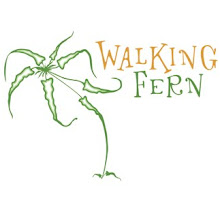I've discovered a new tradition that I'm very egg-cited to share with you this Easter! Although popularized in more recent years by a post at
www.marthastewart.com, I'm sure this technique of dyeing Easter eggs using recycled mens' neckties has been handed down through several generations of crafty-types. As for the first to successfully hatch the idea... I salute you! And the best part of all... there is little or no mess involved. That's right... no perma-stained fingers or countertops!
I began by collecting 100% silk neckties (they MUST be pure silk, polyester simply won't work) from thrift stores for between $1 and $4 a piece. Look for labels on the backs or tucked into the narrow ends of the ties, and don't overlook the womens' scarves, or even blouses... a good find here can yield enough silk for many, many Easters to come. You might also wish to keep an eye out at garage and rummage sales over the summertime... a great way to collect next year's palette on the cheap!


Bright, intense – but not 'light' – colours on smooth silk work best, and one should avoid ties that appear to be hand-painted, for some reason these types of dyes don't transfer well. Also, predominantly red/maroon colours tend to bleed extensively during the transfer process. Not that one should avoid them, but you will probably want to keep your 'red' silks separate from others until you know how the colour behaves. Generally the following colour behaviours can be expected: Blues produce purples, reds create intense fucshia-type pinks and blacks will transfer as gray. I have yet to have success with anything predominantly yellow, but this all depends on the pattern.
The basic method involves cutting out a piece of silk large enough to completely wrap around an egg (the end of a tie will provide the largest piece of material. You can chop up the tie or go the labour-intensive route of disassembling each with a seam ripper (this is what I ended up doing... the upcycler in me insists that I'll find a use for the wool interlinings one day... if they weren't cut on the bias I would use them for my rug hooking)! Then, wrap an egg with the silk, ensuring that the printed side is facing in towards the eggshell. This is important since the printed side of the silk must be in full contact with the shell in order for the colour to transfer. That said, anywhere there are folds or creases will remain white... the random factor just adds to the unique look of each egg... no two will ever be the same!


Twist the silk so that it is tight around the egg, then take a piece of white cotton or cheesecloth and secure it as snugly as possible around the egg with a twist tie. Repeat the process with different silks on more eggs.
For the even more adventurous, there is an alternative method of wrapping the eggs which involves applying a 'collage' of dampened silk snippets directly to the shell. This is my preferred method; more fussy but it accomplishes two things. It opens up greater variety of colour and pattern possibilities AND it ensures more silk-to-shell contact with the egg. There will still be white areas, but less of them.
Bring water – enough to cover the eggs – to a boil with about 3/4 cup of white vinegar. When it reaches boiling point, reduce to a medium simmer and gently immerse the wrapped eggs into the water (this is when you may want to keep your 'reds' separate from other colours, or everything may take on a pinkish tinge). Set your timer for 40 minutes. (Note: these eggs are NOT suitable to eat, since the acid dyes used in printing silk ties isn't food grade... and therefore may be harmful if ingested!)
When the time is up, remove the eggs with a slotted spoon and allow to cool COMPLETELY before unwrapping... or what I like to call, 'The Big Reveal'. This waiting is definitely the most difficult part of the project, but totally worth it. And guess what? You can use the same silks to dye more eggs!
You will love the variety of textures, colours and patterns that spontaneously happen. It's a wonderful project to do with kids since it really is a tidy process compared to traditional egg-dyeing methods.
Wishing you all a Happy Easter and a wonderful Spring!
Labels: craft, dye, Easter, eggs, neckties, silk, stash, thrift, upcycling










